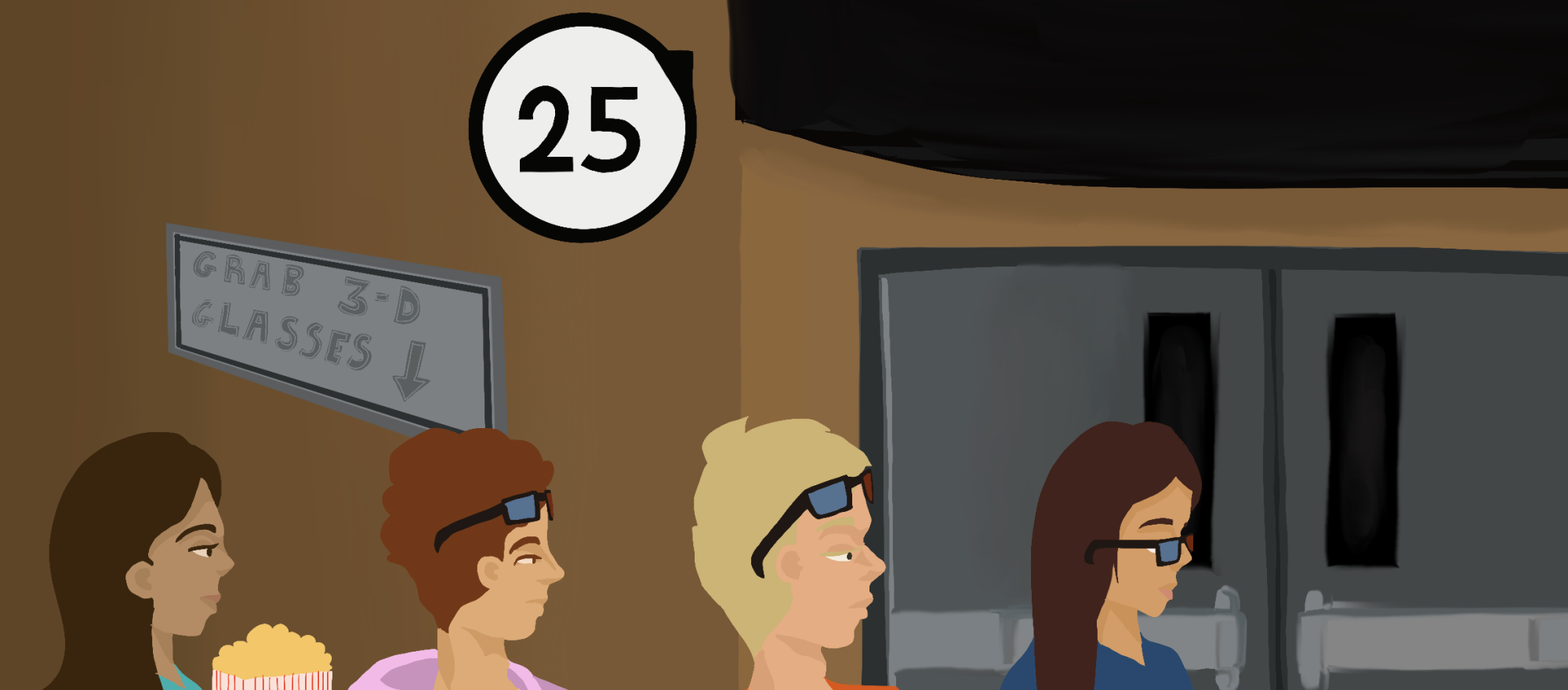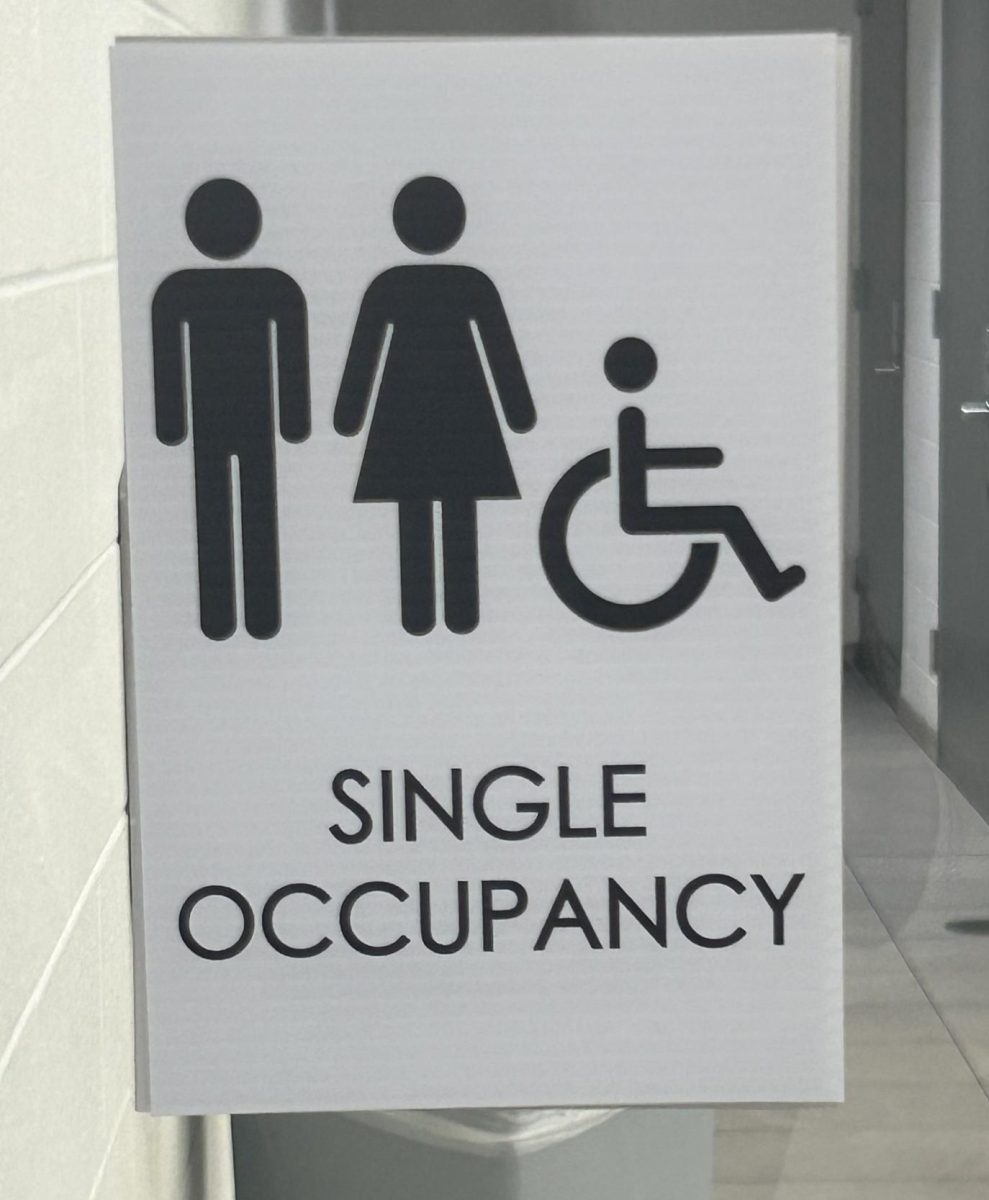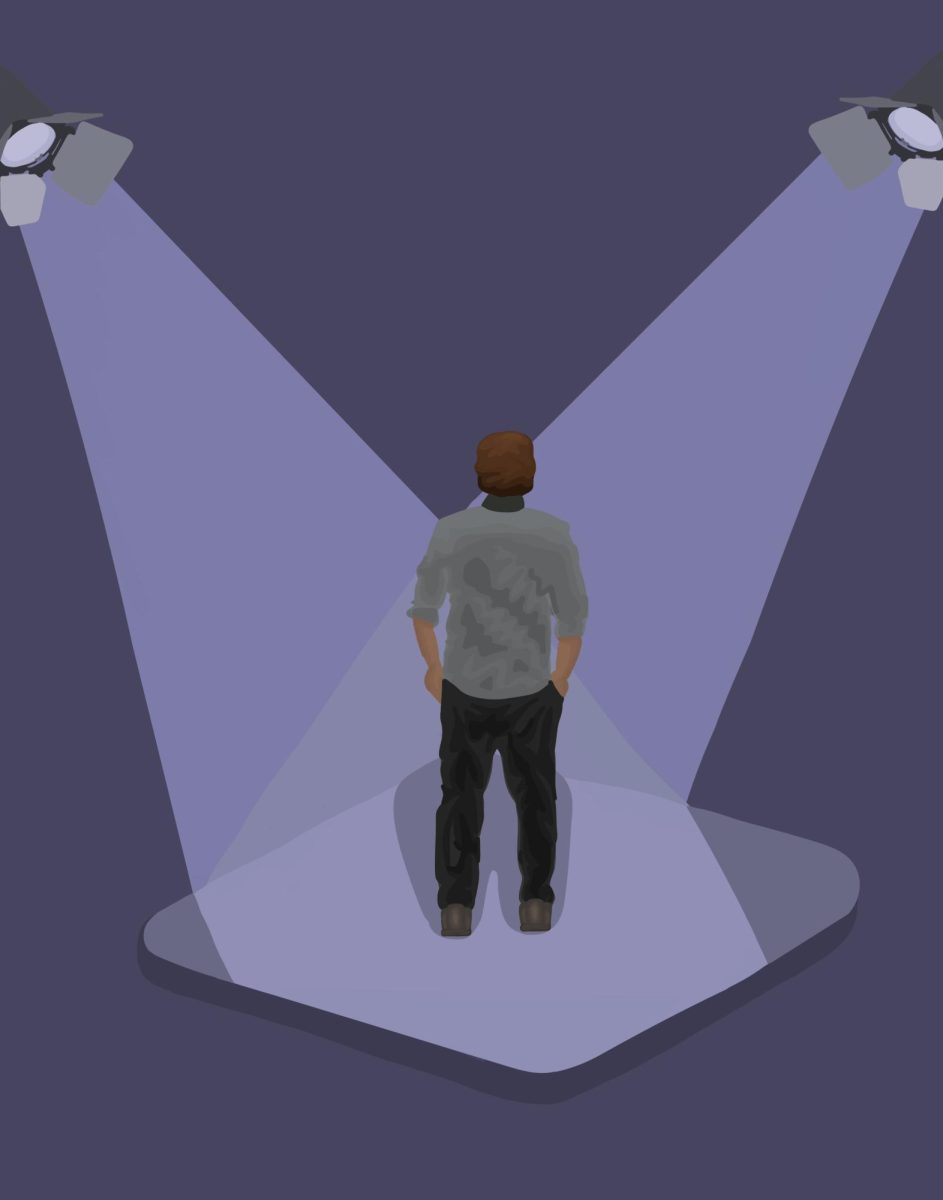When humans are young, watching “Dora the Explorer” or “Curious George” is simply a distraction while waiting for dinner, or a never-ending conversation between their parents and their parents’ friends. Sitting huddled around an iPad, while parents drone on in the background, entirely focused on Arthur’s trip to school or Daniel Tiger’s day in his neighborhood, are waiting for mom to say “time to go.” In their boredom, kids learn without knowing. Science, math, language, communication and, most of all, who they are.
 However, growing up is a fact of life that everyone must go through, but with the kind aid of the television consumed by youth, they are brought into the adult world knowing more about themselves than before.
However, growing up is a fact of life that everyone must go through, but with the kind aid of the television consumed by youth, they are brought into the adult world knowing more about themselves than before.
The kids who watched “Octonauts” grew a love for marine biology. The kids who enjoyed “Little Einsteins” found an inherent need to travel. “Bob the Builder” lovers want a career in architecture. Everything kids loved in the past, is now represented in a little piece of their personality and interests as a teen. Now, the movies teens watch aren’t as impactful to their education, but still affect their personalities greatly. Seeing a character in the media and thinking, “Oh, I want to be like them,” taking some on-screen traits and turning them into their own. Over time, kids’ development into teenagers is reflected by the media consumed up to the point where they are now. Continuing through life, the youth will be affected, even if just slightly, by every show, movie, clip or program they turn on.
CABLE CHRONICLES
Starting in the 1950s, television became the prominent source of in-home entertainment for much of America. Families congregated around the only household TV to watch what was showing that night. There wasn’t a set of options; there was one thing to watch. At that time, “on demand” was nonexistent, and the notion of being able to watch “whatever, whenever” was merely a fantasy.
Perhaps this brought people together more, the whole family sitting down to watch the nightly program and then rushing to talk about it the next morning with peers.
Today, viewers have access to everything, and what is popular is completely subjective. It can be difficult to find a program everyone in the family watches.
Genres have changed, soap operas and game shows have largely fallen out of fashion and have been replaced by sitcoms, dramas and reality TV. Now, shows are released all at once, in the snap of a moment people have access to the same content it would have taken months to obtain in the 1960s. When and how television is consumed has changed extensively as a whole. Sophomore Emmet Husen, a film student, explained his take.
“[Now] it’s meant to be a longer binge all-at-once thing with streaming services, and the fact that episodes have kind of shifted from a bunch of 30-minute episodes to four-hour long or 45-minute episodes per season,” Husen said.
“I THINK IT KIND OF REFLECTS A SHIFT IN THE CULTURE.”
Sophomore Emmet Husen
Today, on-demand television and streaming has taken over how media is consumed. Americans have become binge-watchers and often scroll social media, play video games or fold laundry while watching shows that endlessly play in the background. This “background watching” has resulted in viewers choosing more simple and straightforward plotlines that do not need full attention to watch. Studios are creating more content to be consumed but with stories and characters that are easily digested. In the end, production companies will choose to make content loved by the masses because that’s what will make the most money. Local actor and Associate Professor of Theatre, Film and Media Arts at The Ohio State University, Kevin McClatchy, explained how influence changes what is put out into the media.
“That happens at the level of the people who make the money decisions. They ultimately, by and large, decide what stories get told because they control the money,” McClatchy said.
 This accelerates the film industry’s constant need to put out fluffy, long-form content the American people desire. This can be good and bad for the viewers. Not only continuing to create content to fit viewers’ interests but inadvertently have created more simplistic, cut-and-dry content. With the takeover of streaming, a lot has changed and the abundance of content can change the way film and production are perceived. Especially that void feeling that bingeing a show and finally finishing the last episode can make people feel. Only time will tell the changes that streaming could have on entertainment as a whole.
This accelerates the film industry’s constant need to put out fluffy, long-form content the American people desire. This can be good and bad for the viewers. Not only continuing to create content to fit viewers’ interests but inadvertently have created more simplistic, cut-and-dry content. With the takeover of streaming, a lot has changed and the abundance of content can change the way film and production are perceived. Especially that void feeling that bingeing a show and finally finishing the last episode can make people feel. Only time will tell the changes that streaming could have on entertainment as a whole.
PERSONALITIES AND PROGRAMMING
Actors feel pressured to create content that is liked by audiences. Creators work hard to make viewers enjoy what they are watching by creating memorable performances where you either love or hate their character. Cory Aumiller, drawing teacher and former actor, explained his experience as an actor and the power involved with creating a character. “It’s emotional manipulation trying to decide ‘what is the feeling I want my audience to have… how do I have to construct the scene, the beat or the character or whatever to elicit that [viewer] response,’” Aumiller said.
Whether calling acting manipulation or script selection, these individual choices play into what makes viewers love their favorite characters and shows. During production, everyone involved with a story hopes that viewers will identify with the characters and find a personal connection that helps them feel seen on the screen. Without that connection and intimacy between the storytellers and the viewers, shows and movies fall flat. The stories told would not be quite as personal, and viewers would be less easily immersed in those worlds. Junior Khloe Dewald explained what types of characters she gravitates towards.
“I like characters that stand up for what they believe in, like in ‘Hidden Figures,’” Dewald said.
Looking for characters in the media that are reflective of what an individual wishes to mirror in themselves isn’t designated simply to the heroes. People often go for characters who are flawed, but still present traits they want to emulate in their own lives. For example, Regina George in “Mean Girls” is one of the more popular characters in current media that people love. Some people mimic her brash attitude using her quippy sense of sarcasm to make a joke, but at this point, the viewer has to be able to separate the good one-liner from the mean girl.
 “It depends on how people are overall perceiving them. The movie kind of pokes fun at the characters by making them very overtly ‘Mean Girls.’ If people want to emulate that behavior, then that’s one story. But if people are seeing the critique of that behavior, that’s another story,” Husen explained.
“It depends on how people are overall perceiving them. The movie kind of pokes fun at the characters by making them very overtly ‘Mean Girls.’ If people want to emulate that behavior, then that’s one story. But if people are seeing the critique of that behavior, that’s another story,” Husen explained.
Whether using a catchphrase, buying a character’s signature fashion piece or changing their vocabulary, it is common for viewers to absorb aspects of their favorite characters into their own personalities. The characters audiences love will no doubt have good traits and bad; without some complications, stories lack depth and reality. The same is true with humans, but there is a fine line between the positive interpretation of a character and the incorporation of deplorable behaviors into a viewer’s persona.
“I think, in general, if you’re being a worse person because of a character, that’s bad. If you’re being mean to someone because you watched a show and there’s a character that’s always being mean and it’s seen as cool in the show, I think that can mess with people,” Husen explained.
ELICITING EMOTIONS
Famous writer and poet, Maya Angelou, once said that the purpose of writing is for it to be heard, going through the brain and straight into the heart.
People seek out content that evokes feelings, whether it’s a sappy chick flick to soothe a bad mood or a ditzy rom-com to celebrate a happy one, people desire to feel a connection. It can help to process emotions, the “magic of movies” can be chalked up to the ability to make people feel understood.
When film or TV breaks down what people are going through, viewers are able to relate it to real-life situations. Still, sometimes viewers just want to watch and connect with the character through the screen. Social studies teacher, Douglas Rinehart, explained what he gets from film.
“I consider that [film] is art, in the same way that music is something that’s evocative, it’s gonna make you feel certain emotions,” Rinehart said. “I think movies, a good movie, a good television program, that you’re really invested in, you can get some emotional feeling from that and I think in general, it can be pretty positive. You know, even if you’re feeling kind of sad, it might be something that you are cathartic [about].”
 A good story that blurs the line between hero and villain can help people relate and even change perspectives. Complex storylines and charismatic performances can make the narrative more appealing, leading the viewer to romanticize the experiences they are watching. When consuming media, like many other human activities, it’s an initial thought to share emotions and opinions. Whether it is posting on social media, running to friends in the hall and begging them to watch the newest show or inviting everyone over for a movie night, we crave conversation with content meant to be shared.
A good story that blurs the line between hero and villain can help people relate and even change perspectives. Complex storylines and charismatic performances can make the narrative more appealing, leading the viewer to romanticize the experiences they are watching. When consuming media, like many other human activities, it’s an initial thought to share emotions and opinions. Whether it is posting on social media, running to friends in the hall and begging them to watch the newest show or inviting everyone over for a movie night, we crave conversation with content meant to be shared.
“If I have friends or colleagues that watch it, then we can discuss it, and so that I like that part of it, and so maybe they can tell me some things that I missed, or maybe I can add some insight too,” Rinehart explained.
Most people get media recommendations from friends, which is why interests can become similar between peers. Enjoying and recommending things friends have in common strengthens relationships. “I get all my movie recommendations from my friends,” junior Mia Younkin said.
Not only do friends share shows with each other, but many programs become so popular they can become a linking point between all individuals.
“A lot of girls like ‘Gossip Girl,’ so I bond with my friends over that,” Dewald said.
These connections are key for production companies when deciding what to put in their content. They think about choosing something that can relate to a niche group of people, while also being pleasant for everyone. Broadcasting teacher and Kickin’ It Live adviser, Amanda Fountain, shared how this principle applies to the Kickin’ It Live staff.
“In the high school world, when those stories come out, if there isn’t a connection, it makes it hard,” Fountain said. “When you can humanize any story, it all of a sudden makes people care, to listen and pay attention.”
Nevertheless, the humanization of stories can also be dangerous for viewers as well. Much of the content that is pushed out has deep emotional ties within it, depending on how invested you are, this can skew your perception of how the world works.
“A lot of the media focuses a lot on tragedy and focuses on the negative parts of humanity. And if that becomes your frame of reference, you start to see that around you, and maybe you also tend to think that the world’s a much more dangerous place than it actually is,” Rinehart said.
 How humans perceive the world can greatly affect how they choose to make decisions that impact the world and the people around them. With the development of social media, access to other people’s opinions has exploded, with a quick swipe of the phone allowing users to see every side of arguments possible.
How humans perceive the world can greatly affect how they choose to make decisions that impact the world and the people around them. With the development of social media, access to other people’s opinions has exploded, with a quick swipe of the phone allowing users to see every side of arguments possible.
“For many of you, you don’t turn on the TV that often, but you’re in front of screens daily. And so all of these different forms of media are having to adjust,” Fountain said.
MODERN MEDIA
The prominence of social media has forced traditional media as a whole to make a conscious change in entertainment styles, trying to bring back any audiences they may have lost to shorter-form content. Things in the media have become more absurd, more eye-catching and shorter in length, all to draw attention to that specific program.
Companies use social media influencers and musicians to drive attention to content, hoping for something to hit just right. This development has led to a lack of educational and thought-provoking content in the media today.
“I THINK IDEALLY YOU WANT TO WATCH THINGS THAT ARE INSTRUCTIVE AND HELP US BE MORE HUMAN.”
Drawing Teacher Cory Aumiller
As much as Americans want to sit back and watch a relaxing, low-effort show, the importance of quality content and brain stimulation that was once present, is still prominent. There is a hope that short-term content will fade away, but the truth is adaptation is the only way to work through this change in the media landscape.
“I think ideally you want to watch things that are instructive and help us be more human,” Aumiller said.
Sitting down and focusing when watching programs, searching for the meaning in content as it is consumed, setting the phone aside, television becomes a vessel for sharing ideas and learning about the changes of the world. The job of any media observer is to put in the slightest attention to how the content they are consuming impacts in their life, in the hopes it can contribute to teaching them who they are and where they’re going.














